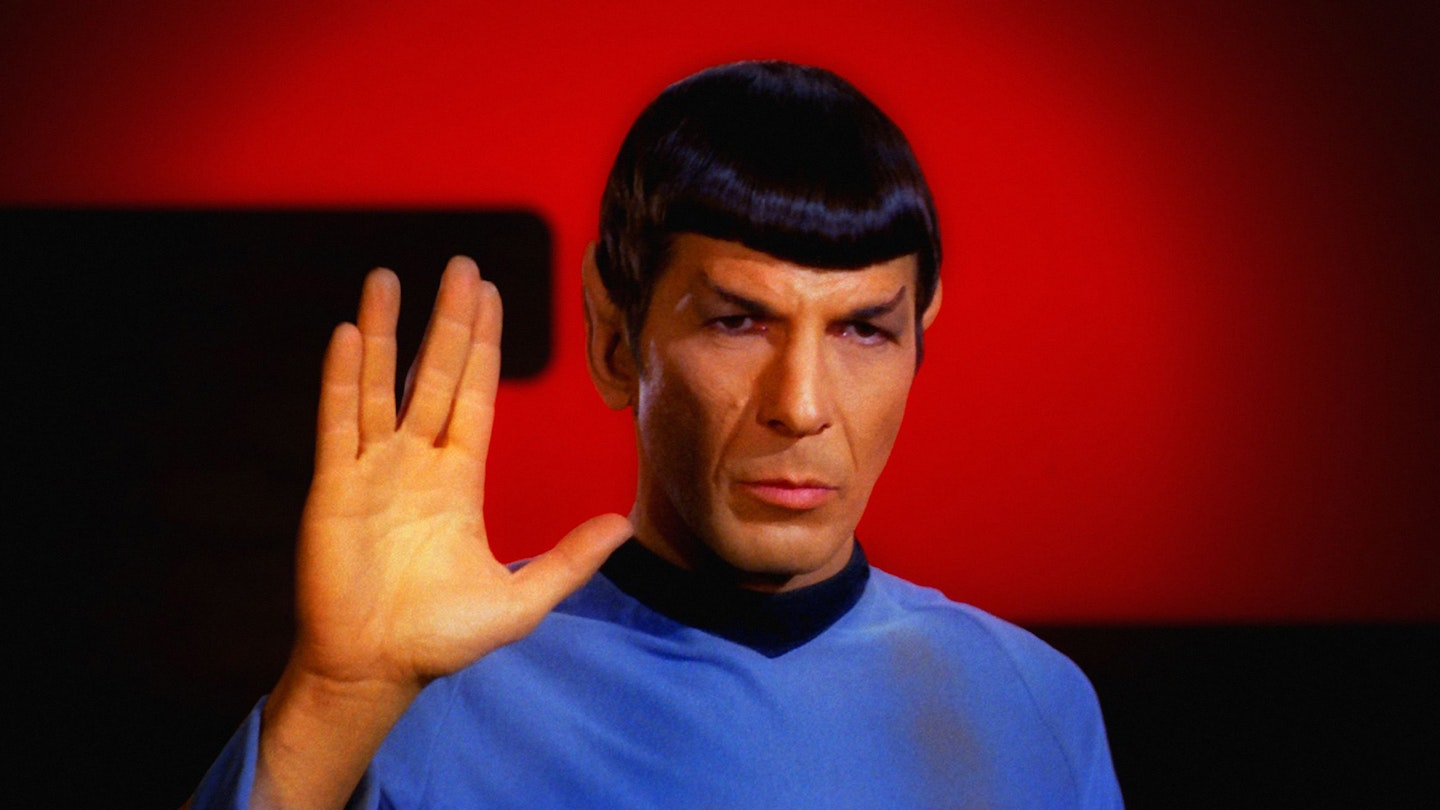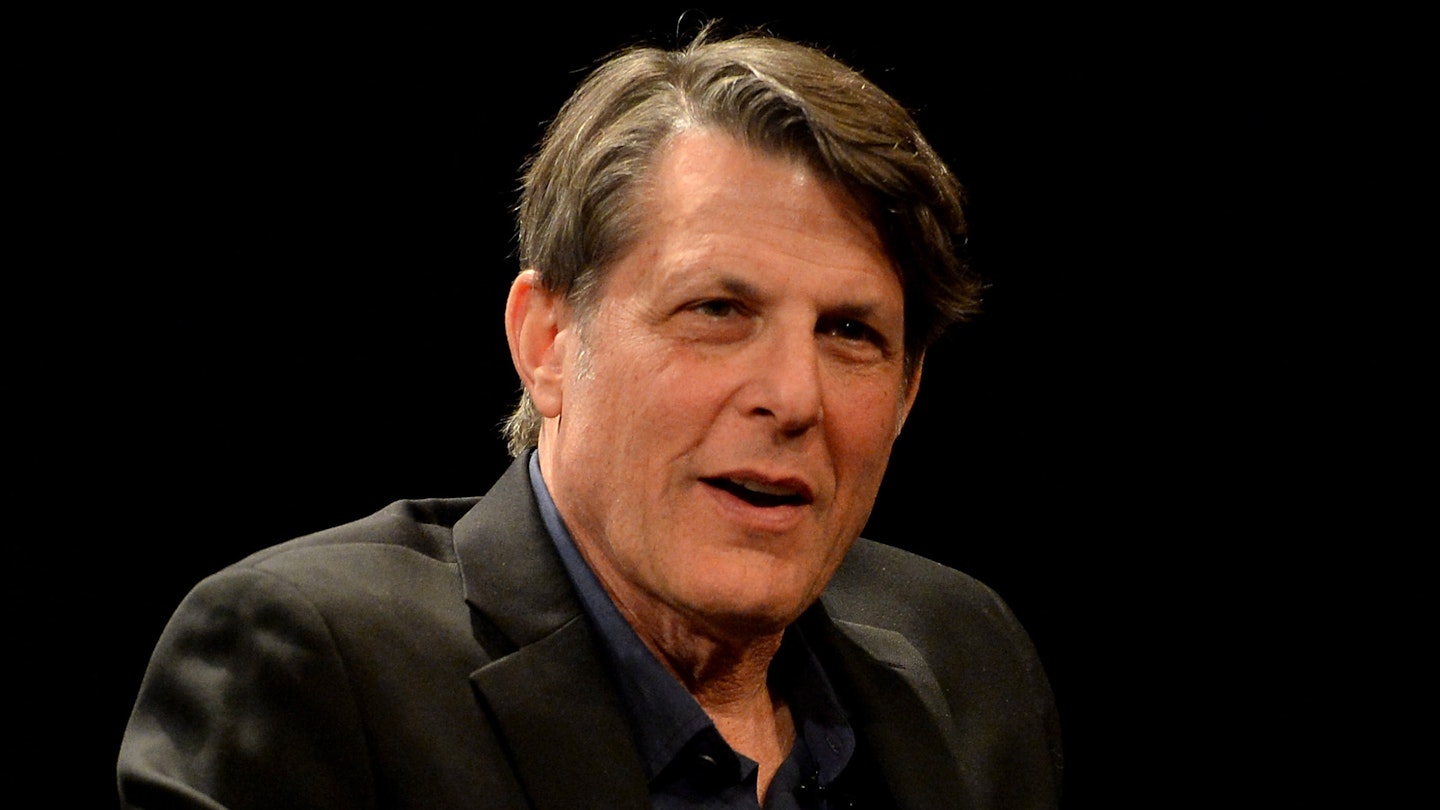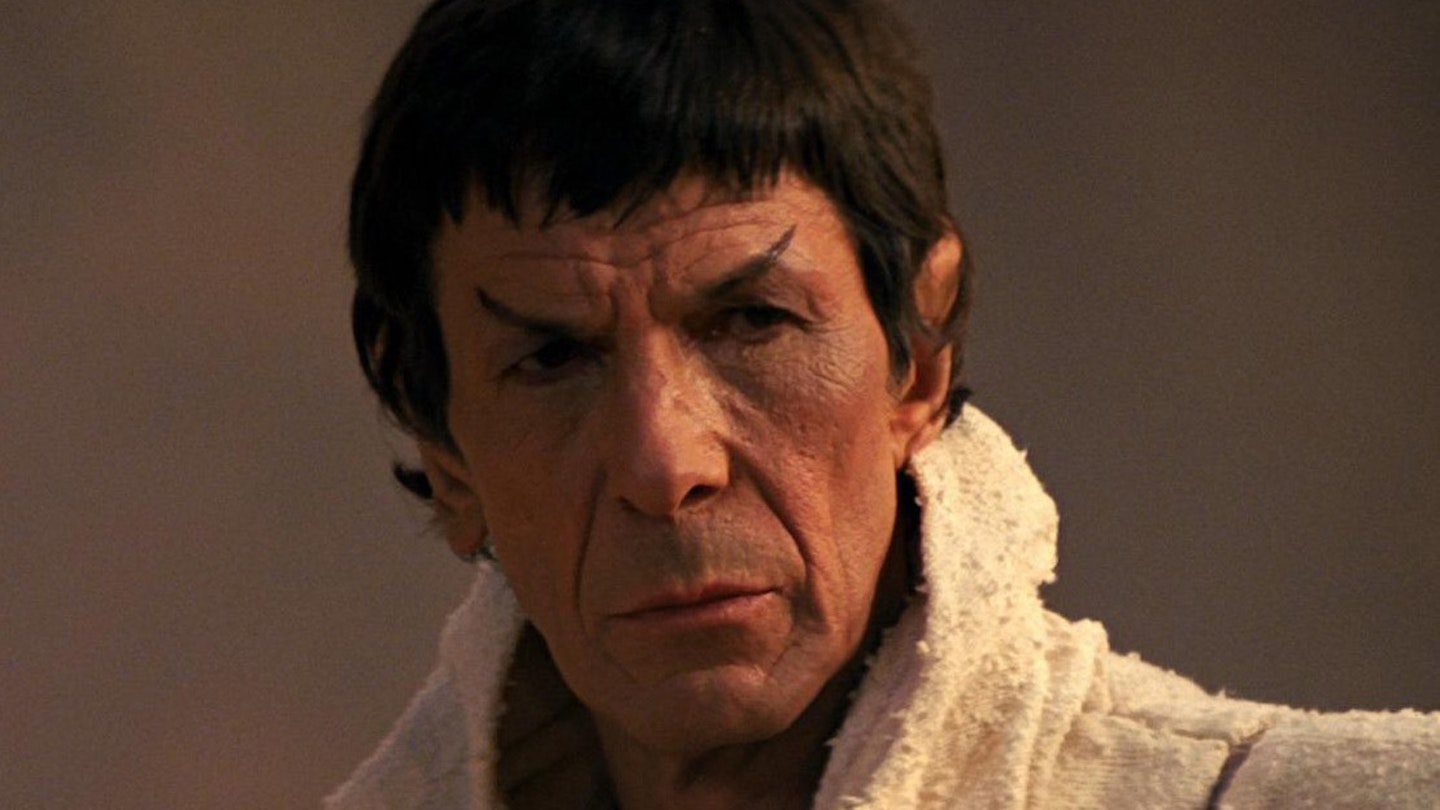Star Trek celebrates its 50th anniversary this year. To mark the occasion, the latest issue of Empire comes with a special 60-page Star Trek supplement, featuring among other things, this personal tribute to Leonard Nimoy by his son, Adam. You can buy the latest issue of Empire right here{
My personal journey with Mr. Spock began in 1964, when my father, Leonard Nimoy, brought home some Polaroid photos of himself as the space-age alien he would be playing in a TV pilot. I was eight years old at the time and at night, instead of doing homework and practising the clarinet, I was watching TV shows like The Wild Wild West, Get Smart, The Man From U.N.C.L.E. and Lost In Space. So when I saw that first picture of Dad as Spock, I thought to myself, “Holy cow, this is awesome!” Of course, NBC, the network of Andy Williams, Bob Hope and Sing Along With Mitch, rejected that Star Trek pilot but gave series creator Gene Roddenberry the green light to have another go at it, with the condition that he “get rid of that Satanic-looking alien!”

Mr. Roddenberry insisted that the alien stay, and the rest, of course, is history. Dad was always proud that Spock was the only character from that original pilot who made it into the series. And he was equally proud that Mr. Spock would reappear in the most recent incarnation of Star Trek under the auspices of J.J. Abrams. J.J.’s insistence that Spock be a part of the new Trek movies begs the central question I try to address in my new documentary film, For The Love Of Spock: what is it about the pointy-eared alien that has resonated with so many people for so many years? Why has Spock continued to be heralded as a pop-culture icon almost 50 years after Star Trek debuted on network television?
Dad never set out to create a popular character. His intention was simply to give Spock a dynamic inner life.
Dad never set out to create a popular character. His intention was simply to give Spock a dynamic inner life. I believe my father’s true genius was in finding a personal connection to all the roles he played. He once reminded me Spock was the outsider trying to make a contribution to the human society in which he found himself. This was exactly what Dad experienced growing up in Boston, the son of Russian immigrant parents. He saw himself as an outsider trying to break away from his immigrant upbringing and assimilate into American society.
And identifying with Spock as the outsider happens to be one of the most common comments I received during the course of interviewing people for my documentary. But there was more for Dad to work with; because Spock was half human and half unemotional Vulcan, there was always this inner conflict to keep control of his emotional side — another aspect of Spock’s character people can relate to. And the Vulcan salute, coupled with the adage, “Live long and prosper,” was another trademark fans couldn’t resist. The salute was actually created by Dad, again from his own personal experience: a gesture he borrowed from the priestly blessing bestowed on the congregation during Jewish holy days.

Spock was just too popular to leave behind in a coffin on the Genesis Planet.
Because of the incredible success of Star Trek in syndicated television in the 1970s, and the appearance of Star Wars in 1977, the Star Trek features were born. Dad always felt the first didn’t live up to the reputation of the series. It wasn’t until Star Trek II: The Wrath Of Khan, written and directed by Nicholas Meyer, that the film series finally found its footing. But by the end of that film, of course (spoiler alert!), Spock was dead. Wrath Of Khan was a critical and commercial success and Paramount Pictures just couldn’t walk away from so golden a goose. But continue the voyages of the Starship Enterprise without Spock? Unthinkable!
I’m proud to say Spock was just too popular to leave behind in a coffin on the Genesis Planet, so he was resurrected in Star Trek III: The Search For Spock. When Paramount called Dad to ask if he would be interested in appearing in that third Star Trek feature, Leonard, always looking for new artistic challenges, said, “Yes, and I’d like to direct it.” And so he did. The success of Search For Spock led to Dad’s directing assignment on Star Trek IV: The Voyage Home, which became the top box office grosser of the six films to feature the original Enterprise crew.

My father may no longer be with us, but his contributions to Star Trek live on. And the iconic Mr. Spock will no doubt continue to entertain and inspire Earth people for generations to come.
This article first appeared in the Star Trek supplement of Empire Magazine, issue 326. Buy the issue of Empire with the 60-page Star Trek supplement right here{
